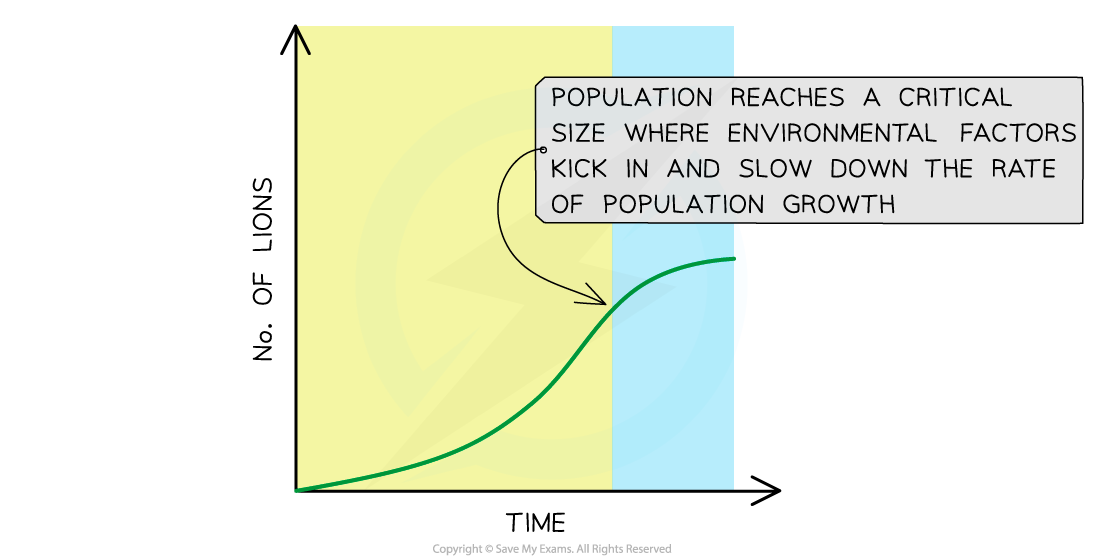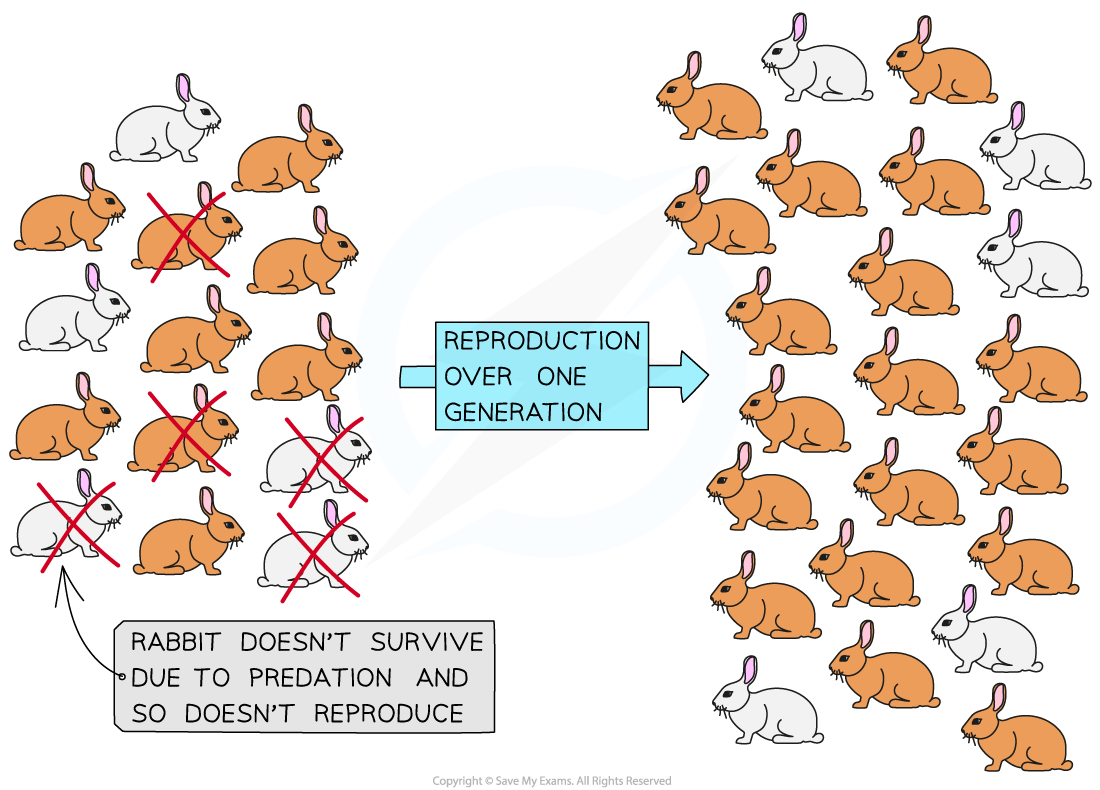Natural Selection (Cambridge (CIE) A Level Biology): Revision Note
Exam code: 9700
Natural selection
Every individual within a species population has the potential to reproduce and have offspring which contribute to population growth
If the offspring for every individual survived to adulthood and reproduced then the population would experience exponential growth
This type of growth only happens when no environmental factors or population checks are acting on the population (for example, when there are plentiful resources and no disease)
One well-known but rare example of exponential growth in a population is the introduction of 24 European rabbits into Australia in the 1800s
The rabbits had an abundance of resources, little or no competition and no natural predators
This meant the population increased rapidly and they became a major pest
In reality, several environmental factors prevent every individual in a population from making it to adulthood and reproducing

Environmental factors
Environmental factors limit population sizes by reducing the rate of population growth whenever a population reaches a certain size
Environmental factors can be biotic or abiotic
Biotic factors involve other living organisms
This includes things like predation, competition for resources and disease
Abiotic factors involve the non-living parts of an environment
Examples of abiotic factors include light availability, water supply and soil pH
When biotic and abiotic factors come into play, not all individuals within a population will survive
For example, if a food source is limited some animals within a population will not get enough to eat and will starve to death
For most populations in the wild, the number of offspring produced is much higher than the number of individuals that make it to adulthood
Population limitation by environmental factors
For African lions living in the wild, there are several environmental factors that limit their population growth rate:
Competition for food
There is a limited supply of prey: other lions and carnivores will also be hunting the same prey
If a lion is not able to hunt and feed then they will die from starvation
Competition for a reproductive mate
Female lions will often outnumber male lions in a population
This means the males compete with each other to mate with the females
When one male is in a contest with another male one (or both) could be injured or killed
Whichever male loses the contest won’t be able to mate with the females in the pride and so won’t pass on his alleles to any offspring
Supply of water
African habitats can be very arid during the dry season
The water sources that the lions drink from can be miles apart
If a lake or source of water dries up then they can die of dehydration
Temperature
The extreme heat experienced in the lion’s African habitat can cause them to overheat and die
It can also prevent them from hunting for long periods during the day, meaning they are less likely to get the food they need to survive
The combined effect of all these environmental factors leads to a decrease in population growth as fewer individuals survive to adulthood and reproduce

Natural selection and survival
Variation exists within a species' population
This means that some individuals within the population possess different phenotypes (due to genetic variation in the alleles they possess; remember, members of the same species will have the same genes)
Environmental factors affect the chance of survival of an organism; they therefore act as a selection pressure
Selection pressures increase the chance of individuals with a specific phenotype surviving and reproducing over others
The individuals with the favoured phenotypes are described as having a higher fitness
The fitness of an organism is defined as its ability to survive and pass on its alleles to offspring
Organisms with higher fitness possess adaptations that make them better suited to their environment
When selection pressures act over several generations of a species they have an effect on the frequency of alleles in a population through natural selection
Natural selection is the process by which individuals with a fitter phenotype are more likely to survive and pass on their alleles to their offspring so that the advantageous alleles increase in frequency over time and generations
Example of natural selection in rabbits
Variation in fur colour exists within rabbit populations
At a single gene locus, normal brown fur is produced by a dominant allele whereas white fur is produced by a recessive allele in a homozygous individual
Rabbits have natural predators (eg. foxes, stoats) which act as a selection pressure
Rabbits with a white coat do not camouflage as well as rabbits with brown fur, meaning predators are more likely to see white rabbits when hunting
As a result, rabbits with white fur are less likely to survive than rabbits with brown fur
The rabbits with brown fur therefore have a selection advantage, so they are more likely to survive to reproductive age and be able to pass on their alleles to their offspring
Over many generations, the frequency of alleles for brown fur will increase and the frequency of alleles for white fur will decrease

Examiner Tips and Tricks
Remember that organisms better suited to their environments are more likely to survive, but survival is not guaranteed. Organisms that are less suited to an environment are still able to survive and potentially reproduce within it, but their chance of survival and reproduction is lower than their better-suited peers.
Also, it is important to be aware that an environment, and the selection pressures it exerts on an organism, can change over time. When a change occurs then a different phenotype may become fitter. Finally, remember that all organisms (not just animals) experience selection pressures as a result of the environment they are in!

Unlock more, it's free!
Did this page help you?